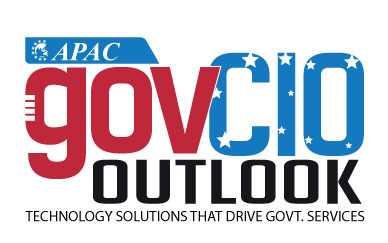Welcome back to this new edition of Gov CIO Outlook !!!✖
DECEMBER - 20209GOVERNMENT CIO OUTLOOKdifferent growing conditions. From a manufacturing point of view, you could see this design shift with the advent of Vertical Farming - growing crops in layers under artificial conditions. As Brian Caulfield discussed recently, it allows producers to grow enormously more on a particular piece of land, potentially up to 60x more efficiently. This is done via layers of "snooker table-sized trays" mounted on top of each other. "You can also very, very accurately control and optimize growing conditions," said Caulfield. "It means, for example, you can have much more locally grown produce, fewer air miles and also much better quality because you have so enormous amount of control over disease, pests and the environment in which the plants are growing."There are some interesting companies operating in this space, such as Herdsy, which automates and analyzes farm animal data and converts it into valuable profit decisions for farmers. Ensuring farms operate at greater scale is also a high-impact outcome using drones for field management, or ensuring safety while operating at scale, is the remit of companies such as Farm eye.SustainabilitySustainability remains paramount to the industry, with numerous operators applying clever tools to ensuring lesser levels of waste. Food cloud, for example, is a social enterprise that reduces food waste and reduces food poverty by allowing food businesses to efficiently and effectively donate to charities within their communities.Elsewhere the development of alternative meat products has proliferated more and more in recent years, with the likes of Beyond Meat, Memphis Meats, and others creating products, which are easily substituting traditional protein options. However, the production of these products must be continually tuned so as to make less and less of a strain on the planets' resources.Security is also viewed through this lens the security of supply of the product and of the supply chain. Companies like Synoptic are looking at this area ensuring the sanctity of products from the factory through retail by building in sensors that detect breaches in safety packaging.Insects are also a huge driver hereused as protein substitutes at organizations like Hexafly, or supporting the pollination population with companies such as Apis Protect. Sustainability is the hottest topic of food, carbon, and economic growth. Nutrition OptimizationMajor bodies such as Teagasc (Ireland) promote data-led approaches towards crop yield planning, with regular predictions, updates, and advice on what returns will be at any given time. Elsewhere companies such as Glanbia, Techna and Nuritas have developed greater ways to optimize the nutritional make-up of foods. Nuritas uses smart bioinformatics technology to identify new beneficial natural peptides allowing companies to bring scientifically proven products to market, faster and more affordably. Deviations from current paths, or closer into a selection of those anticipated today, will inevitability be driven by popular changes, allowing tech enablers to follow pathways demonstrated by growth in future of work practices. Farms are SMEs but are rapidly becoming exposed to global technology practices. Embracing those practices, which suit them, will be key to their survival. There are some interesting companies operating in this space that automates and analyzes farm animal data and converts it into valuable profit decisions for farmers
< Page 8 | Page 10 >
< Page 8 | Page 10 >
